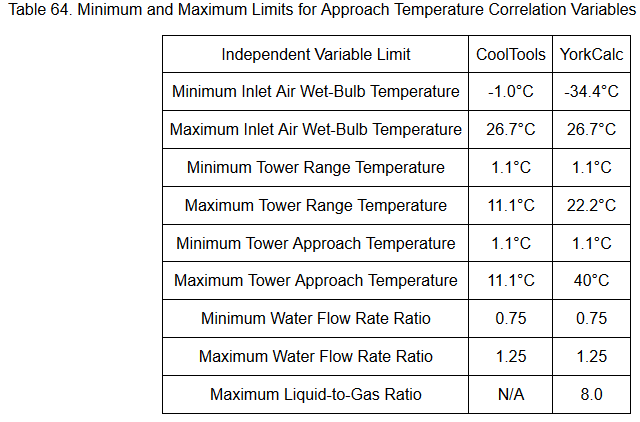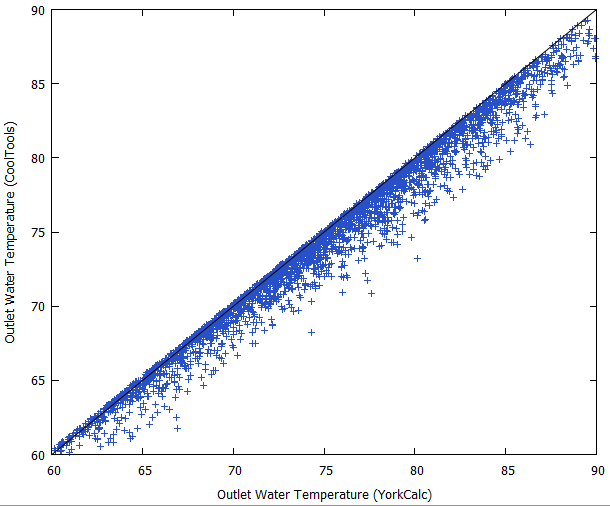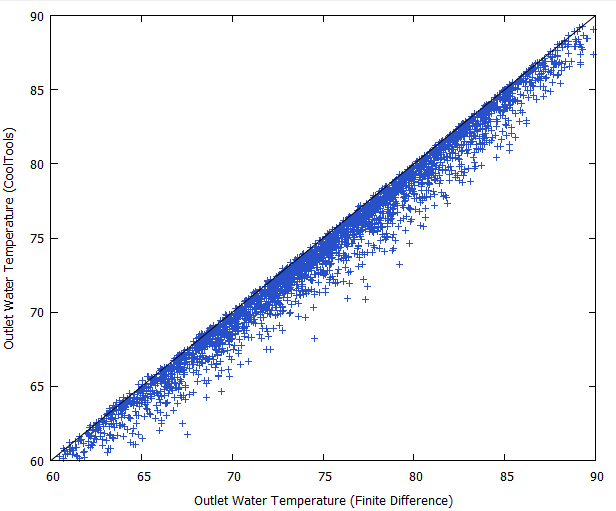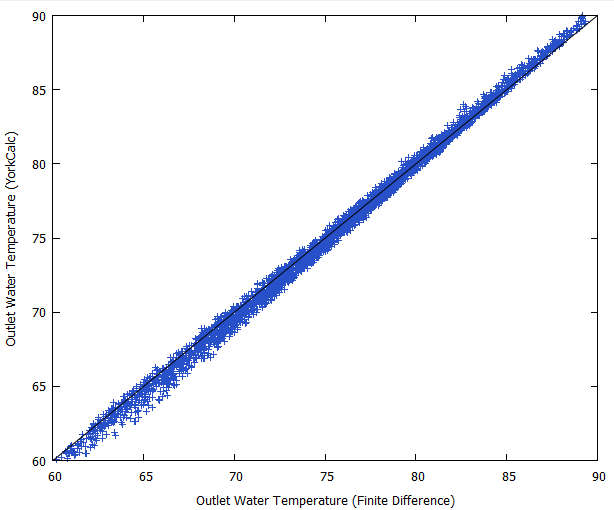Cooling Tower Variable Speed - Which empirical model to choose?
I'm using a CoolingTower:VariableSpeedthat supplies water to my chiller. You can choose mostly between two empirical models:
- YorkCalc
- CoolTools (crossflow).
I'm interested in knowing which one I should pick.
I have noted a couple of factual differences. First, YorkCalc uses 27 coefficients while CoolTools uses 35, but that's not a very useful piece of information to have.
More interestingly, the model boundaries differ quite significantly, YorkCalc accepts a broader range of conditions.
From the Engineering Reference, Tower Heat Rejection, Table 64:

For the record, YorkCalc is the default in E+.
Does this mean YorkCalc is valid for a broader range of conditions, and would be better?
Do you have any guidance as why I should choose one or the other?








